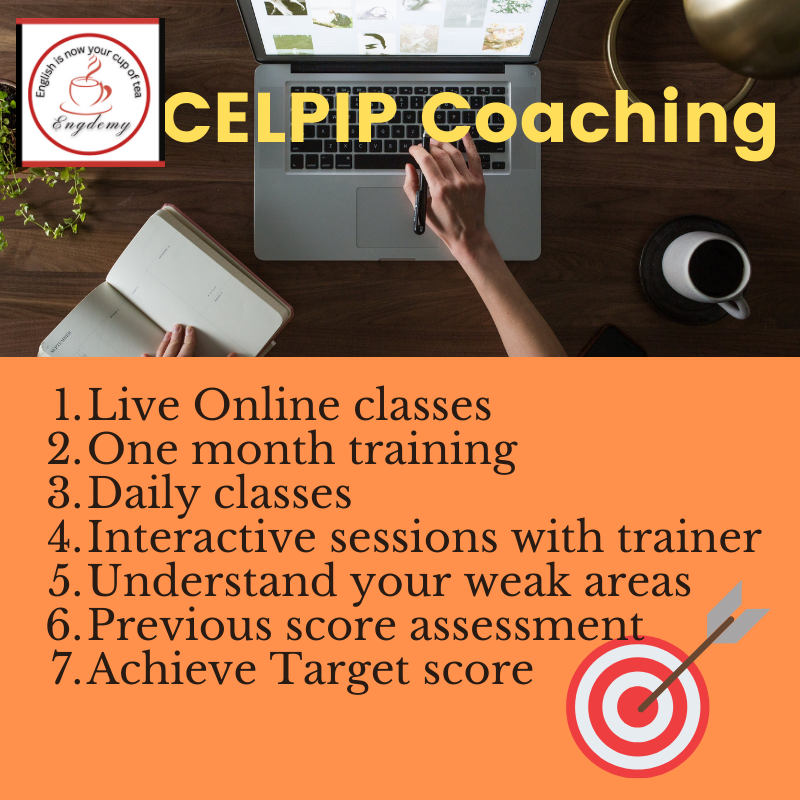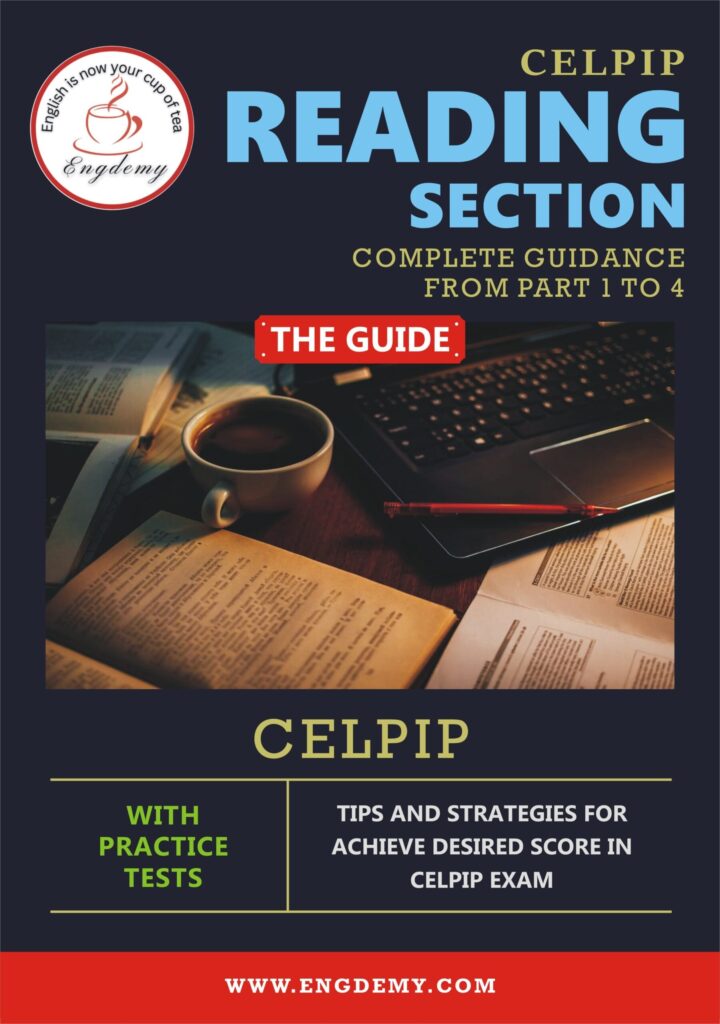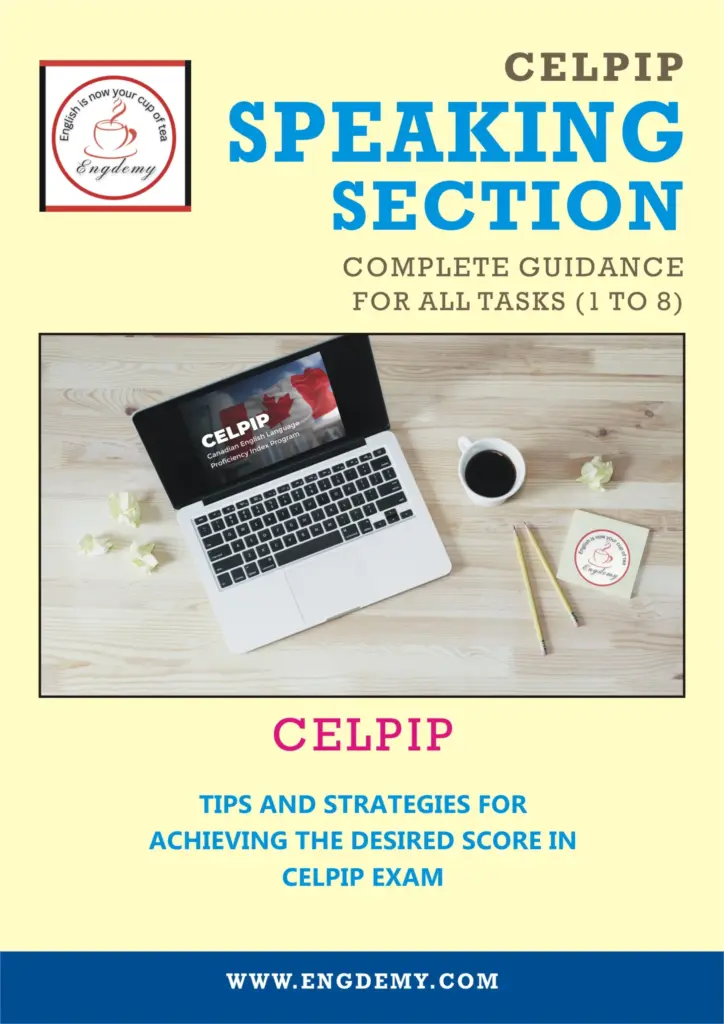LISTENING Time allotted: 47-55 minutes
NUMBER OF QUESTIONS | COMPONENT SECTIONS |
1 | Practice Task |
8 | Part 1: Listening to Problem Solving |
5 | Part 2: Listening to a Daily Life Conversation |
6 | Part 3: Listening for Information |
5 | Part 4: Listening to a News Item |
8 | Part 5: Listening to a Discussion |
6 | Part 6: Listening to Viewpoints |


Simple strategies for Listening
Practice Remembering.
One way to improve your ability to predict is to listen to a recorded video, news program, radio interview, or podcast.
Use the pause button to stop the recording at the end of a sentence.
Repeat the sentence.
Gradually increase the length of what you repeat. You do not have to repeat the words exactly; the goal is to increase the amount you remember.
Practice Predicting.
One way to improve your ability to predict is to listen to a recorded video, news program, radio interview, or podcast.
As you listen, pause every minute or so and predict what will happen next and what you will hear next.
Write down any words that you expect to hear, and then check to see how many of them you hear.
Keep practicing until your accuracy improves.
Practice listening for specific information.
One way of practicing listening for information is to:
Pick a video, news program, radio interview, or podcast, and listen for specific information.
Listen for What, Where, Who, Why, When, and How.
Listen again for any words that you didn’t catch the first time.
Buy our Online Practice tests




A series of 5 practice tests which will assist in practice for Celpip General.
Also Available E book series for other sections



Effective Strategies for Success in the CELPIP Listening Test
The CELPIP (Canadian English Language Proficiency Index Program) Listening Test is designed to assess your ability to comprehend spoken English in various everyday contexts. The test includes a series of audio recordings, followed by a set of questions that test your understanding of the content, structure, and key details. The Listening component is crucial in determining your overall proficiency level and plays an essential role in your CELPIP score. To perform well on the CELPIP Listening Test, you need to develop a deep understanding of the test structure, refine your listening skills, and employ effective strategies. Below are several strategies that can help you improve your performance and increase your chances of achieving a high score in the CELPIP Listening Test.
1. Familiarize Yourself with the Test Format
The first step in preparing for the CELPIP Listening Test is to thoroughly understand the test format. The test is divided into four parts, each focusing on a different type of listening task. These tasks are:
Listening to Information: This part assesses your ability to understand and extract important information from a conversation or a monologue.
Listening to Problem Solving: In this task, you will be asked to follow a conversation and identify solutions to various problems or situations.
Listening to a News Item: Here, you will be tested on your ability to understand a news report or similar media content, paying attention to specific details, such as dates, locations, or facts.
Listening to a Discussion: This task evaluates your ability to understand multiple perspectives in a discussion and pick out essential information related to opinions or viewpoints.
Understanding the format will help you prepare more efficiently. Each task has a unique set of listening skills required, so practicing each type will ensure you’re well-prepared for any situation during the test.
2. Develop Active Listening Skills
Active listening involves more than just hearing the words. It requires fully concentrating, understanding, and responding to what is being said. In the context of the CELPIP Listening Test, active listening can help you capture important details in the audio passages.
Start by practicing listening to a variety of English-language content, such as podcasts, news broadcasts, lectures, and conversations. This diverse exposure will improve your ability to comprehend different accents, speaking speeds, and styles of communication. While practicing, focus on:
Identifying key points: Try to pick out the main idea, supporting details, and facts.
Noticing the tone and attitude: Pay attention to the speaker’s tone to understand their attitude, whether they are happy, upset, confused, or neutral.
Listening for transitions: Transitions like “for example,” “on the other hand,” and “in conclusion” can signal important changes in the conversation or monologue.
Active listening is not just about hearing, but also about understanding and mentally engaging with the material.
3. Practice Listening Under Time Constraints
One of the most challenging aspects of the CELPIP Listening Test is completing the tasks within the allotted time. During the test, you will need to listen carefully, process the information, and answer the questions all within a limited time frame. To improve your time management skills, simulate test conditions by practicing under timed scenarios.
Set a timer for each listening task and avoid pausing or rewinding the audio while practicing. This will help you build focus and prevent overthinking. By repeatedly practicing under time constraints, you will become more comfortable with the pressure and improve your ability to think quickly and respond accurately.
4. Focus on Keywords and Details
In the CELPIP Listening Test, you will be asked to identify specific information, such as names, dates, locations, or key facts. To excel at this, it’s essential to train your ears to recognize keywords and important details during the listening process.
Listen for signal words: Pay attention to words that indicate important details or changes in the conversation, such as “first,” “next,” “finally,” or “but.”
Highlight numbers and dates: Dates, times, and numbers are often key details in the Listening Test, so make sure to pay attention to these during the audio passages.
Take note of transitions: As mentioned, transitional words or phrases are signals for changes in the direction of the conversation. They help you anticipate what to listen for and how to organize your response.
Focusing on keywords and essential information ensures that you can efficiently answer questions based on specific details, rather than getting lost in less important content.
5. Practice with Sample Tests
One of the most effective ways to prepare for the CELPIP Listening Test is by practicing with sample tests and previous test materials. These resources will help you become familiar with the question types, listening passages, and overall structure of the test.
Simulate test conditions: Try to replicate the actual test environment by following the timing rules and practicing in a quiet setting.
Review your answers: After completing the practice test, go over your responses carefully. Look for areas where you struggled, and analyze the types of mistakes you made. This will help you identify patterns and areas that require further attention.
Take note of listening strategies: When reviewing your answers, pay attention to which strategies worked best and which ones need improvement. This allows you to refine your approach as you continue practicing.
6. Improve Your Vocabulary and Comprehension Skills
A strong vocabulary and comprehension ability are critical to understanding the diverse topics you might encounter in the CELPIP Listening Test. Expanding your vocabulary will help you better understand complex or unfamiliar words and phrases that may come up during the test.
Read regularly: Reading articles, books, and newspapers in English will expose you to new vocabulary, idioms, and expressions. Pay attention to how words are used in context.
Use vocabulary apps: Many language apps and websites focus on building vocabulary. These can help you learn new words and test your understanding through quizzes and exercises.
Watch English-language media: Watching TV shows, movies, and documentaries in English will help you familiarize yourself with different accents, dialects, and slang, improving your listening comprehension.
Improving your vocabulary and comprehension will not only help you understand the audio content more clearly but also give you the confidence to respond accurately to the questions.
7. Stay Calm and Focused During the Test
Test anxiety can interfere with your ability to perform well, so it’s important to stay calm and focused during the CELPIP Listening Test. Remember that the test is designed to evaluate your listening abilities, not your speed or memory.
Take deep breaths: If you start feeling anxious, take a moment to breathe deeply and relax. Clear your mind before the next audio passage begins.
Stay engaged: If you miss a detail or answer a question incorrectly, don’t panic. Focus on the next part of the test and continue listening carefully.
Trust your preparation: You have already put in the effort to prepare, so trust your practice and experience to guide you through the test.
Staying calm will allow you to stay focused, which is essential for making the best use of your listening skills during the test.